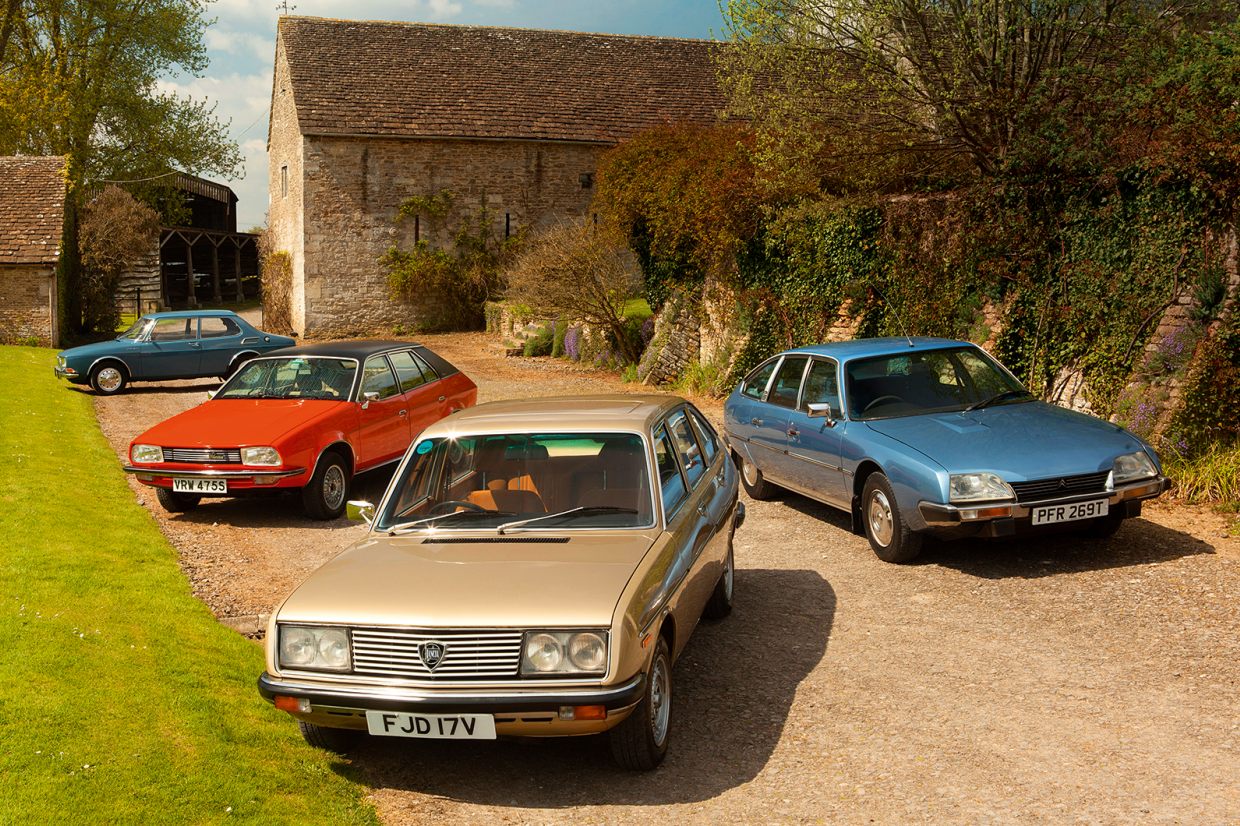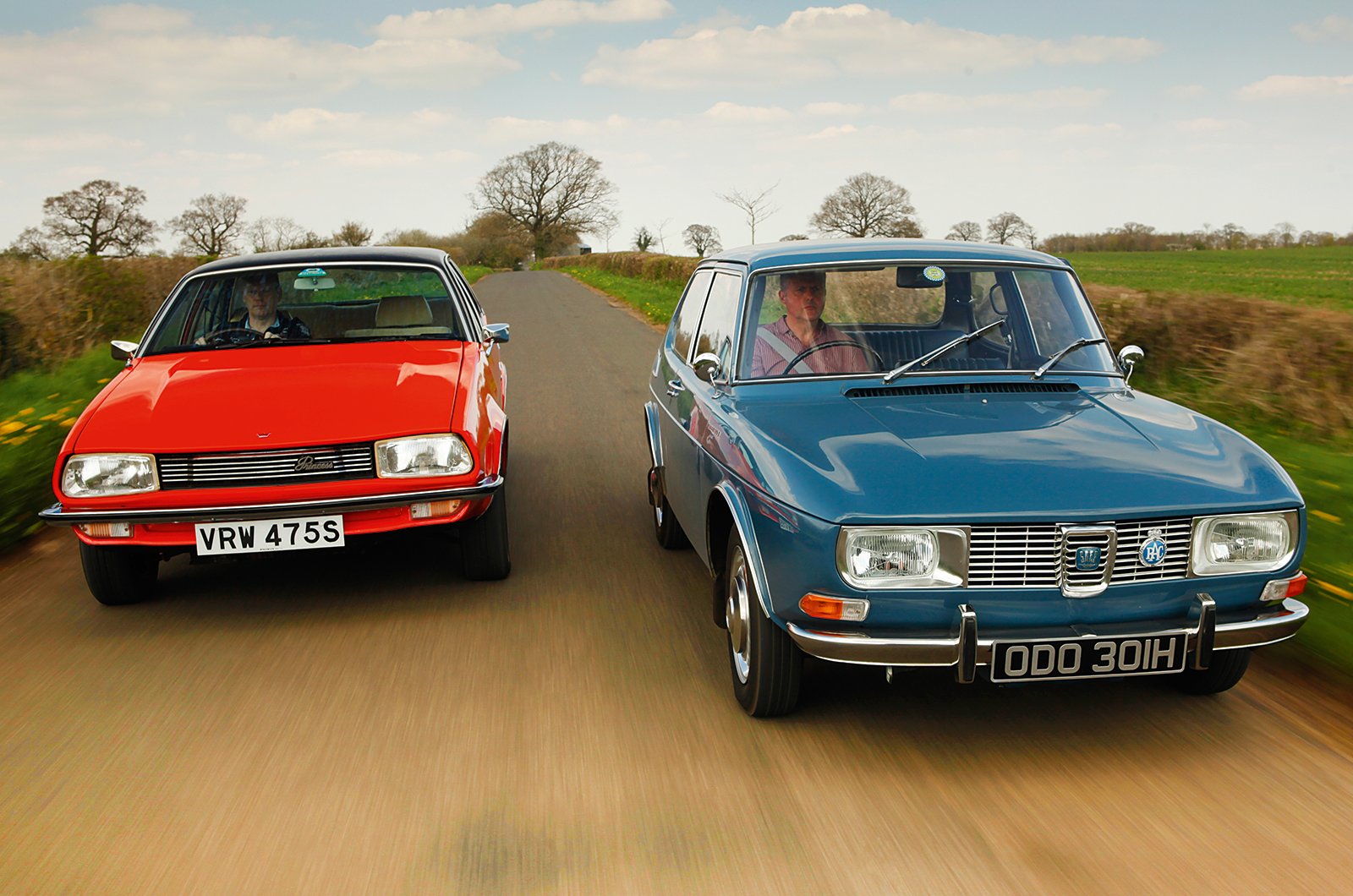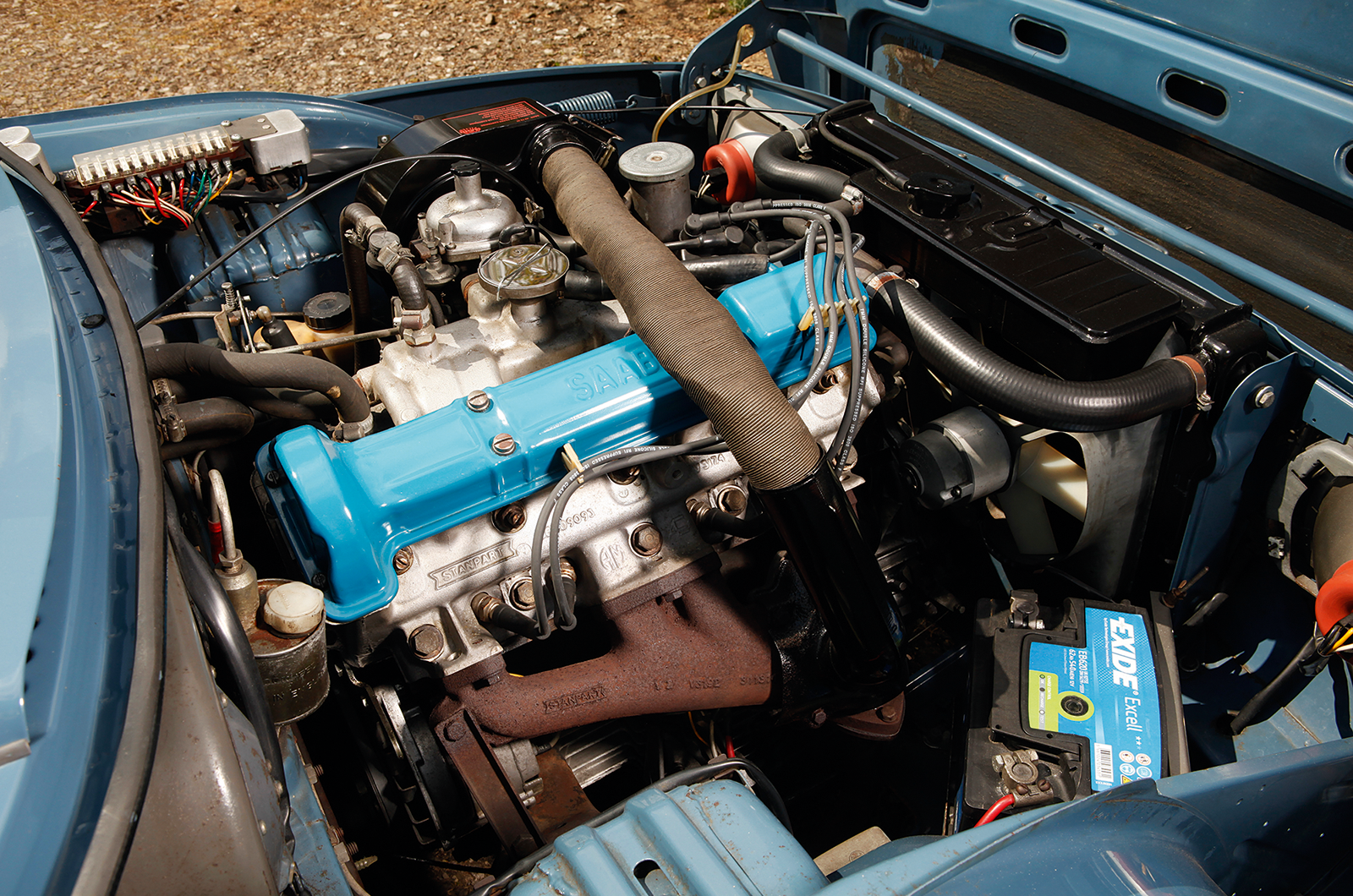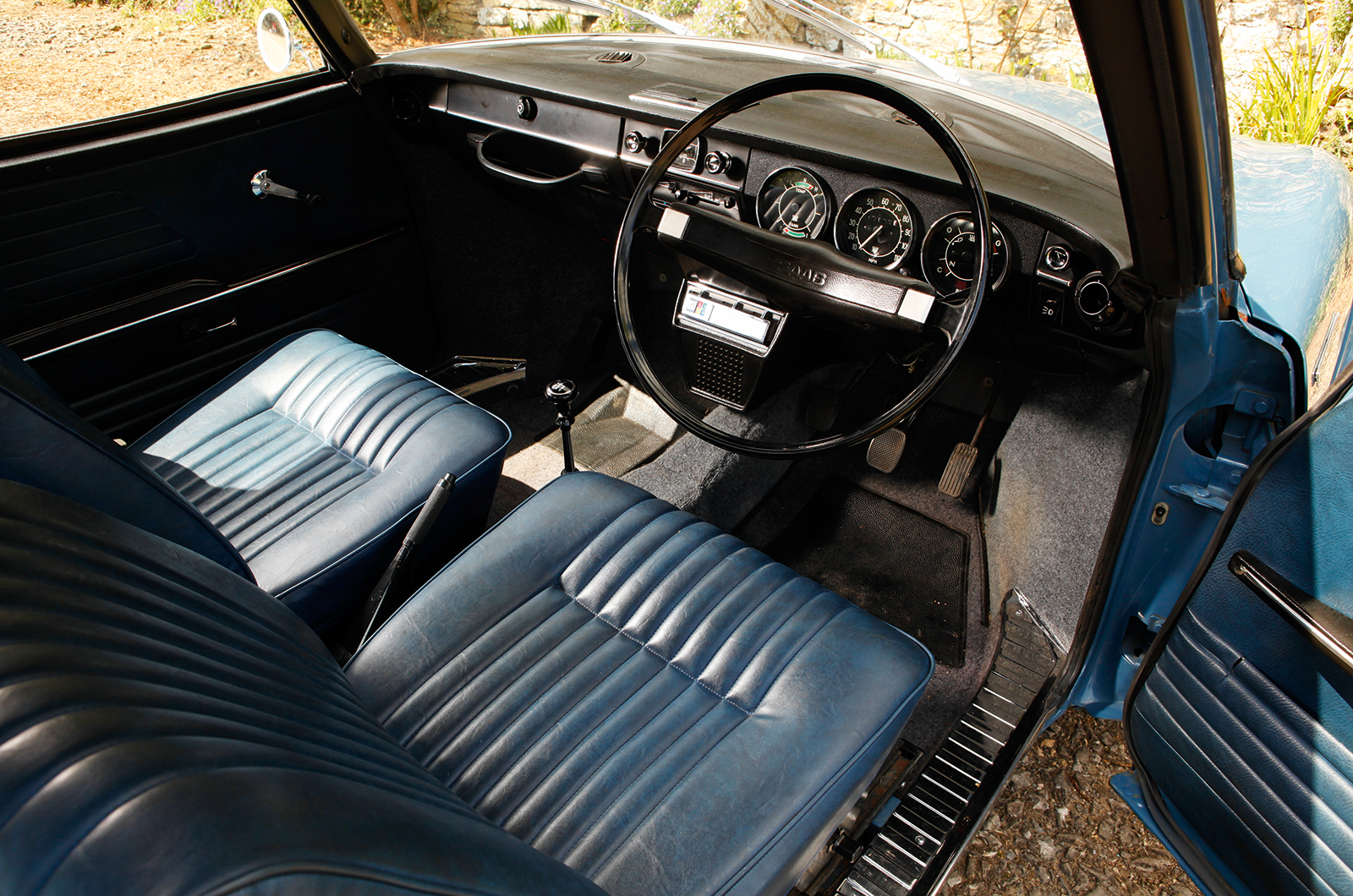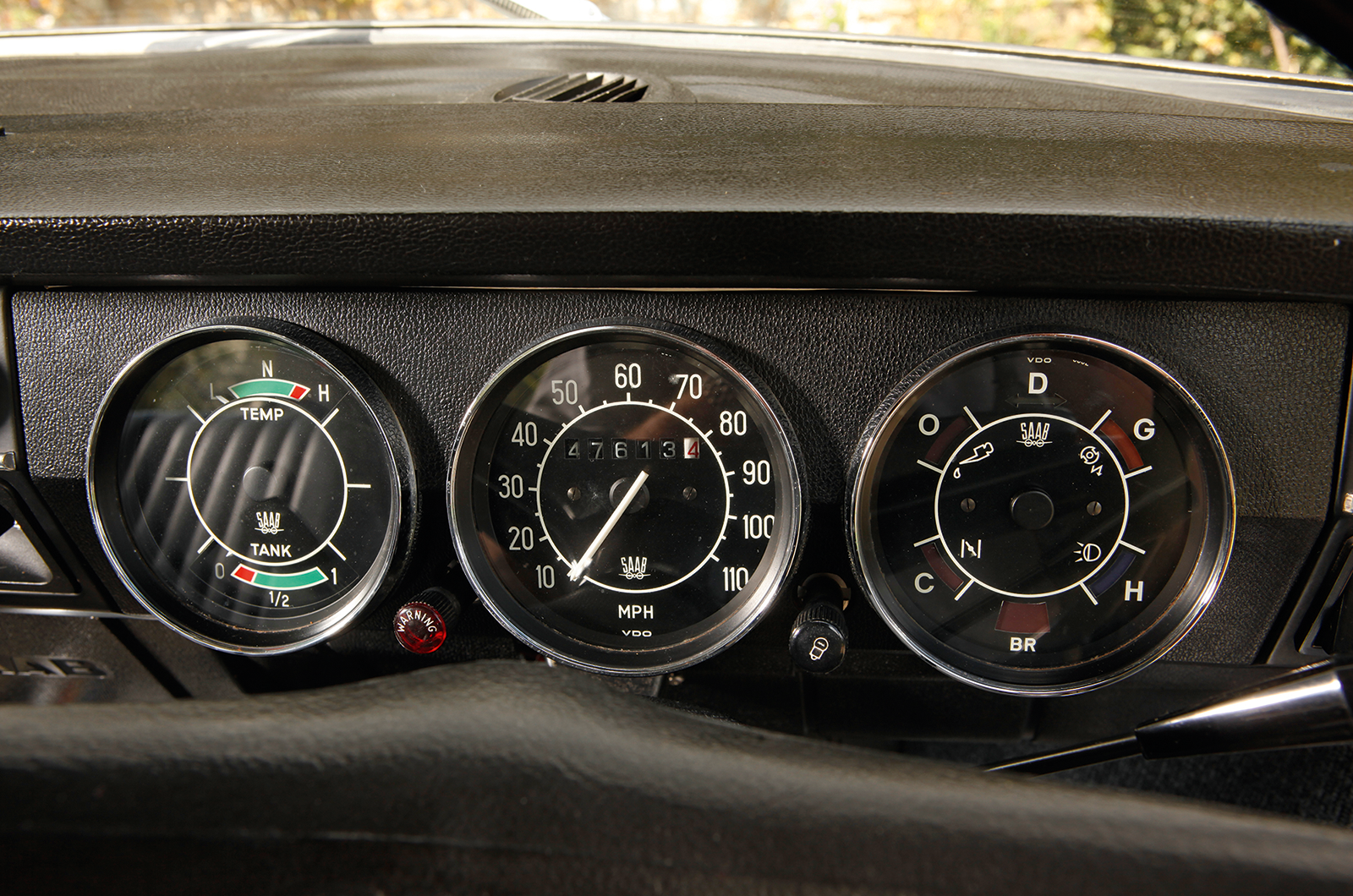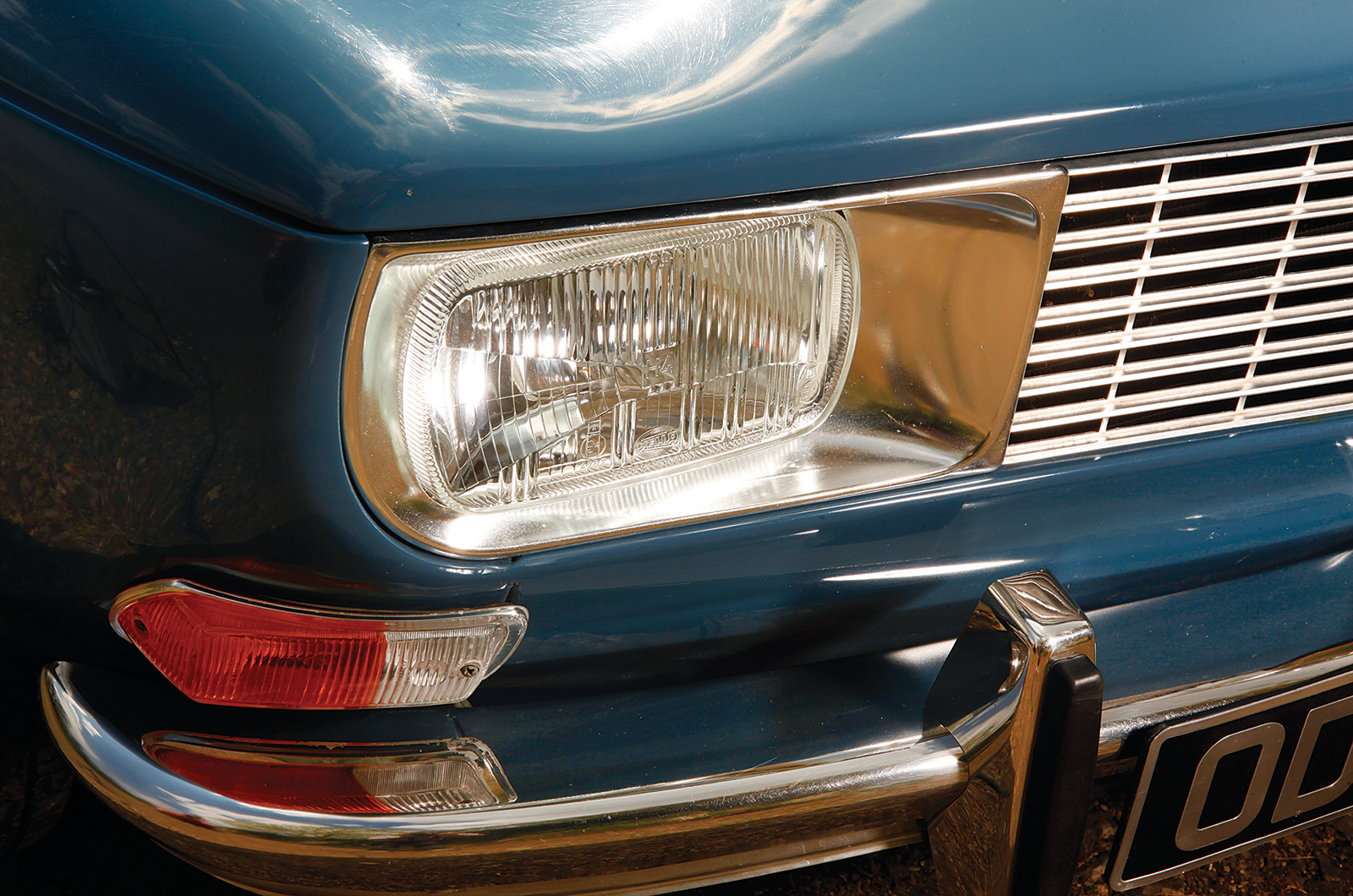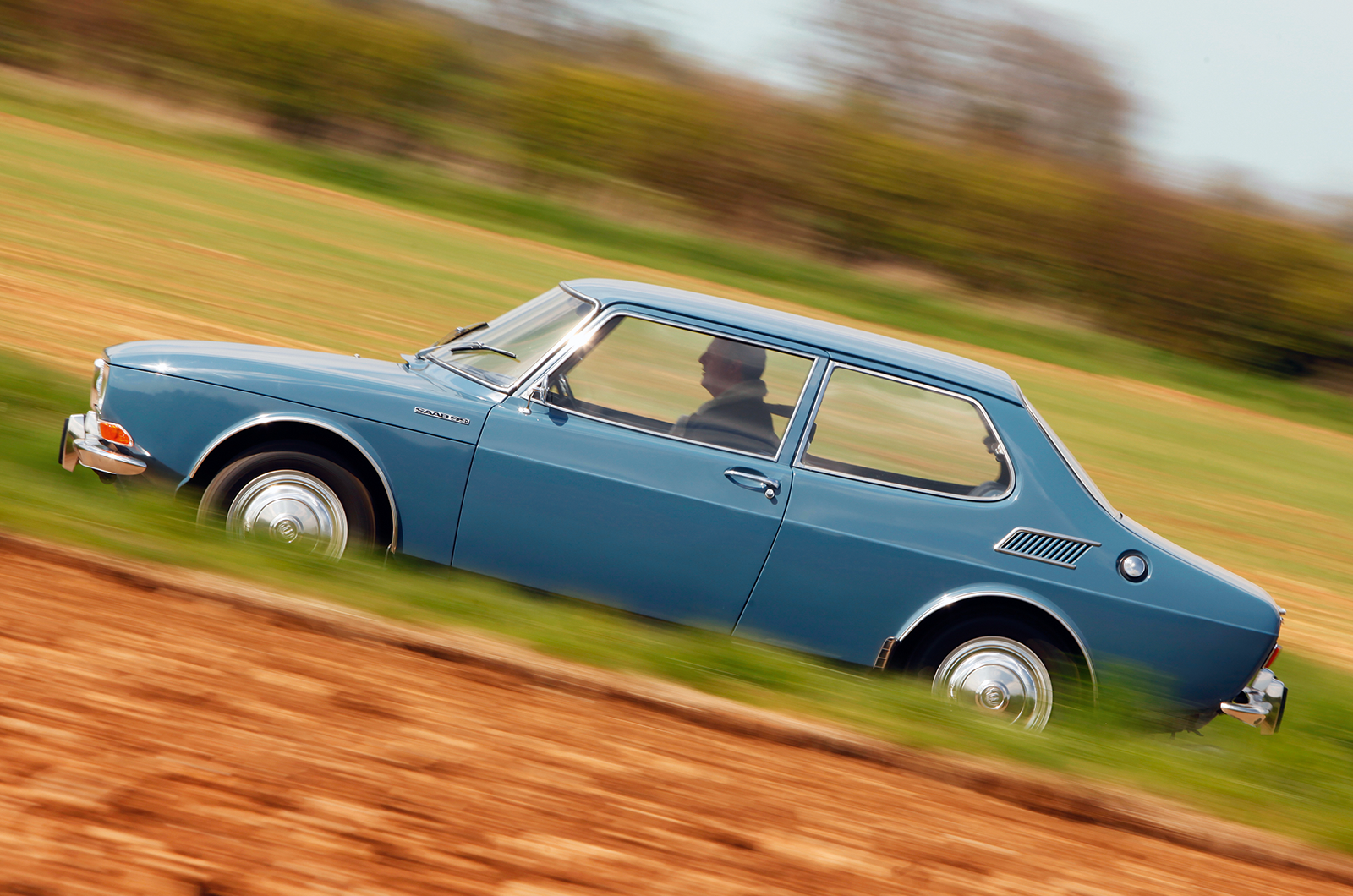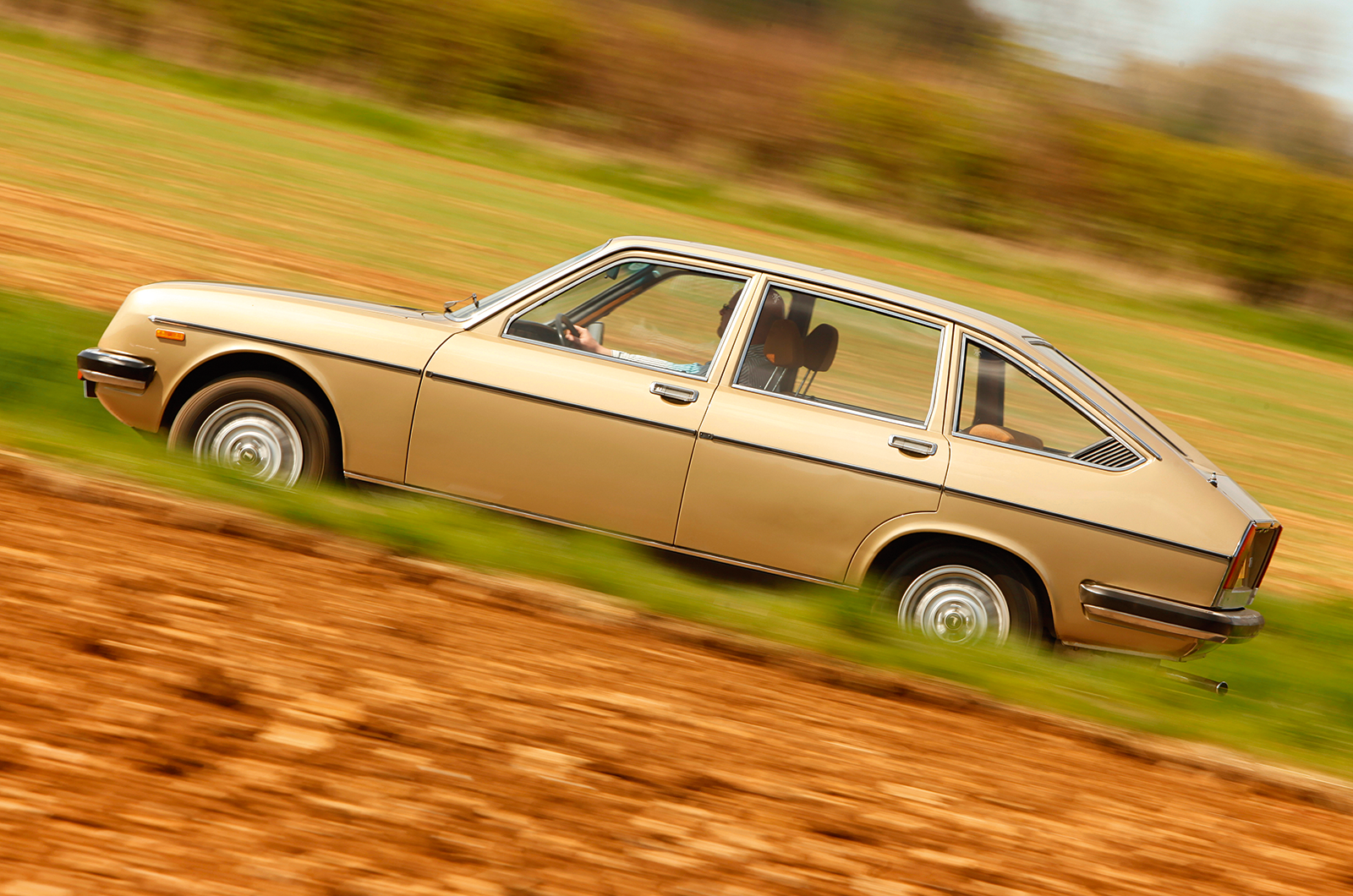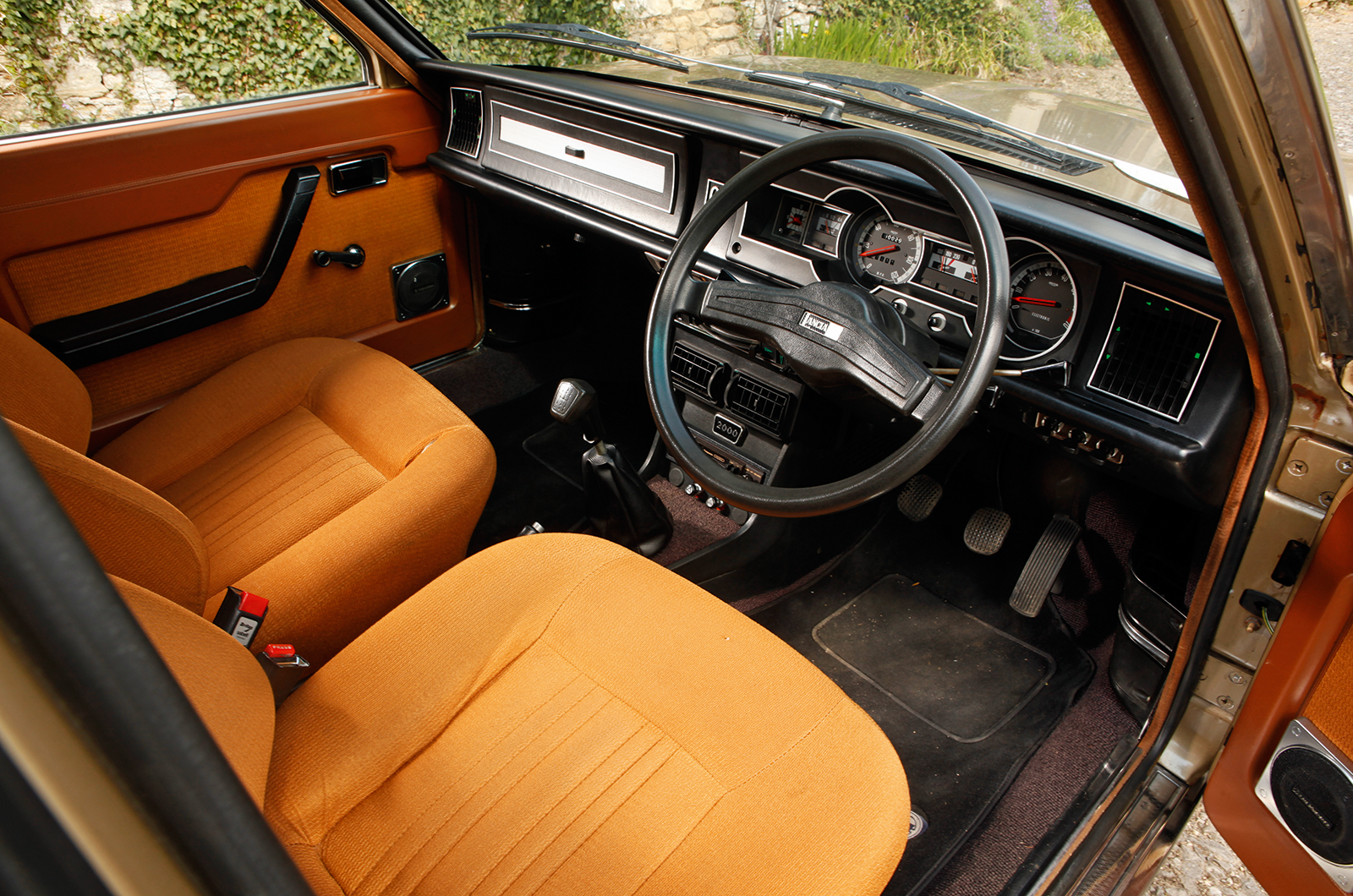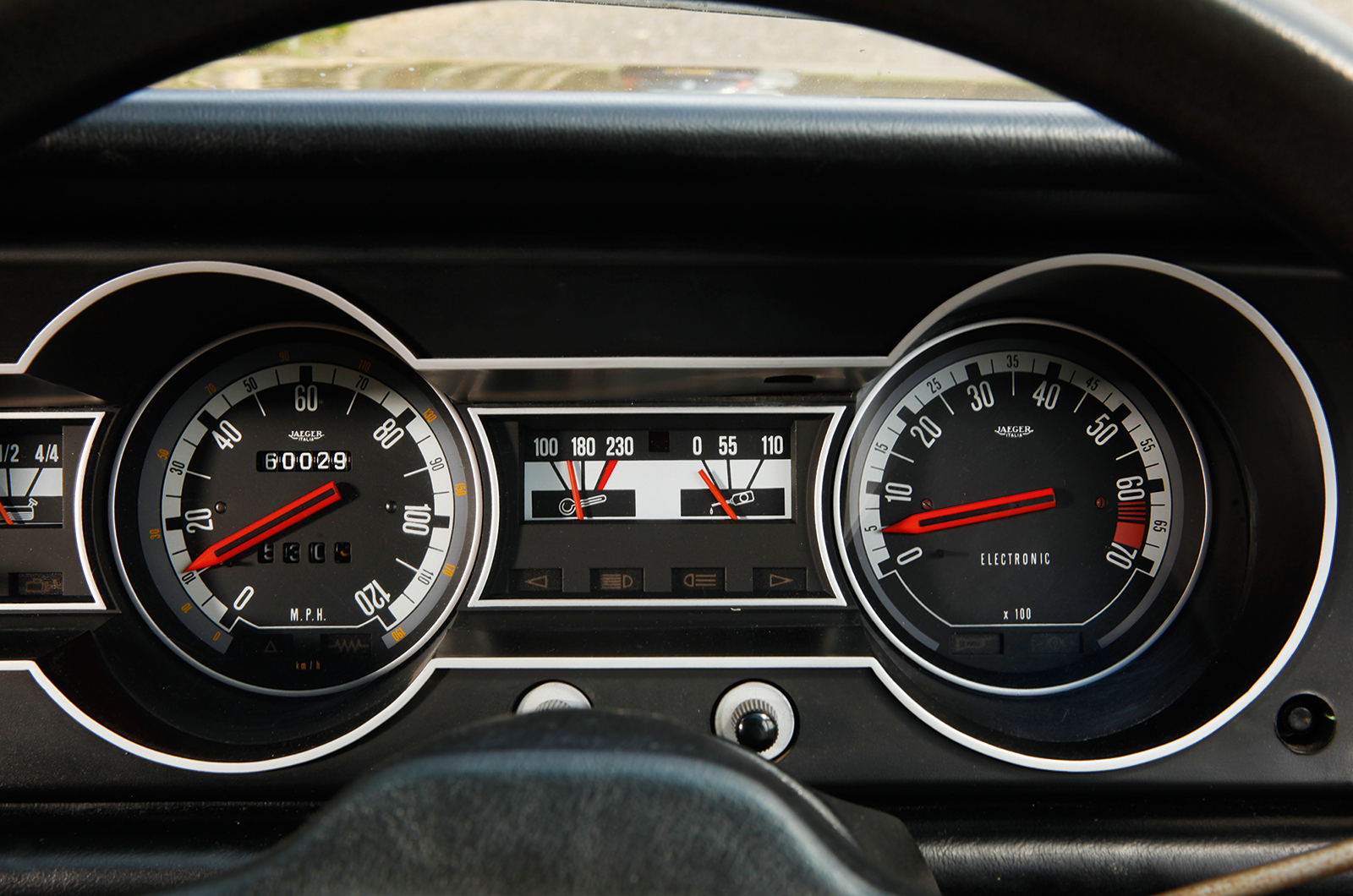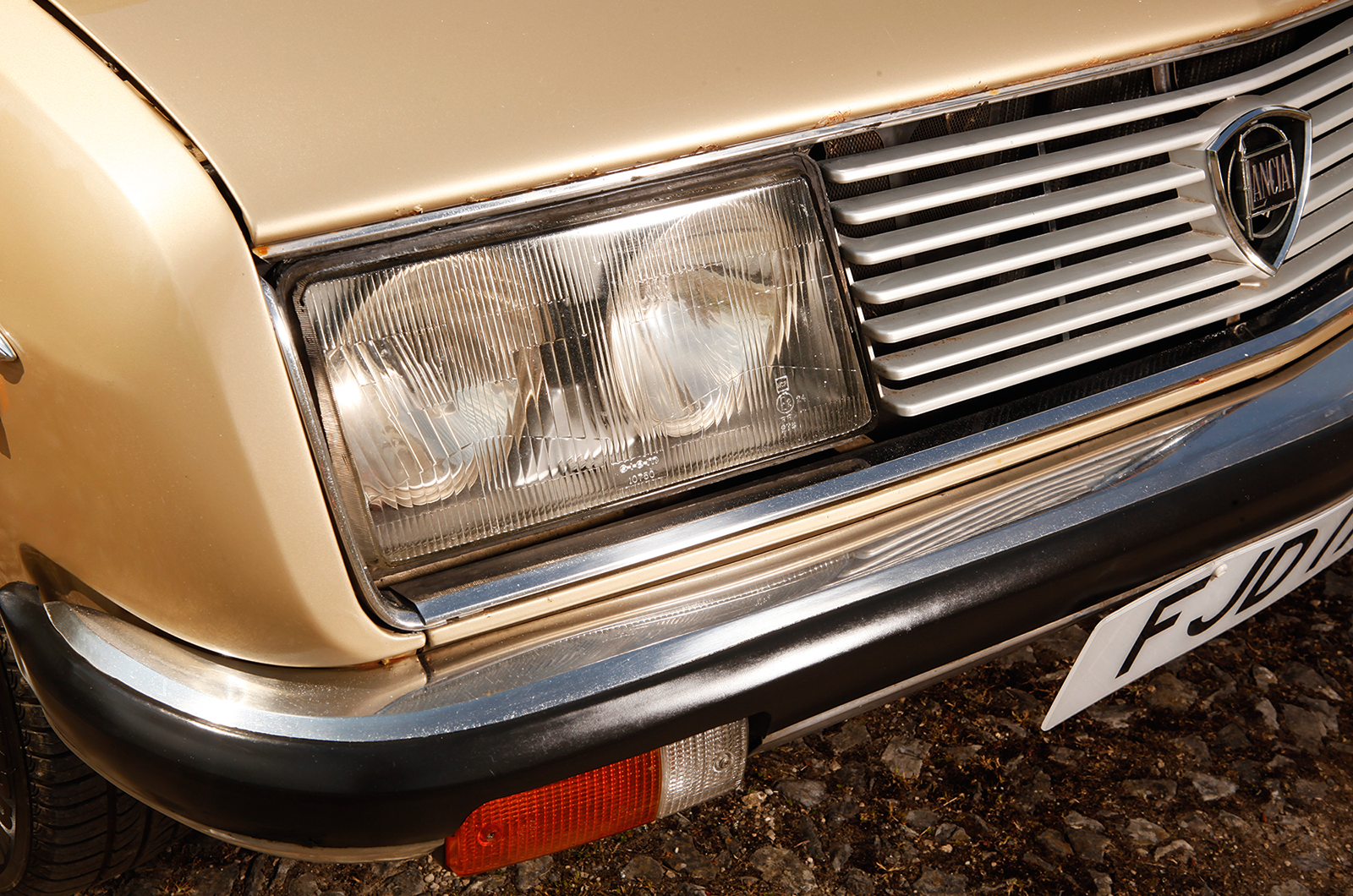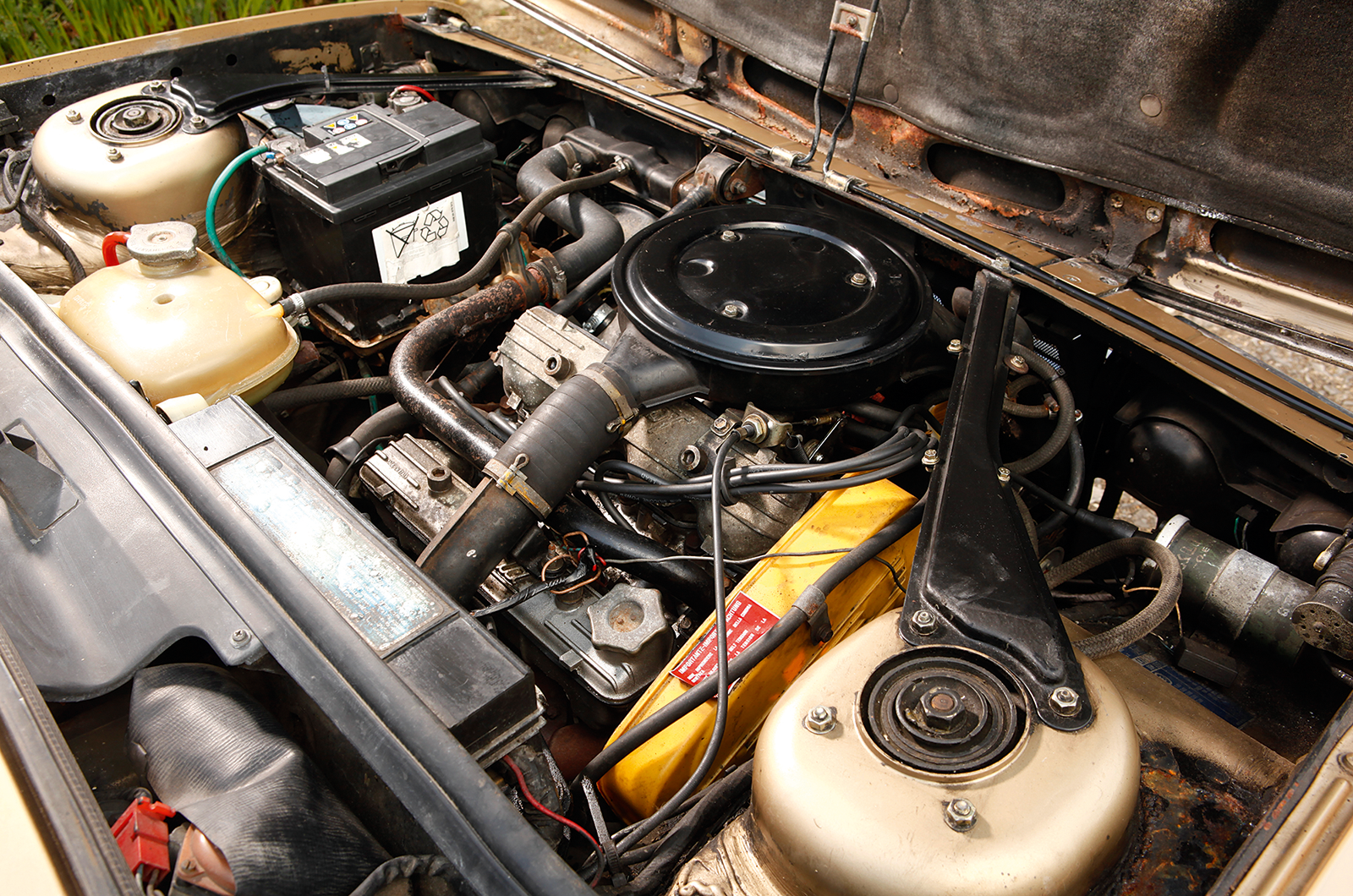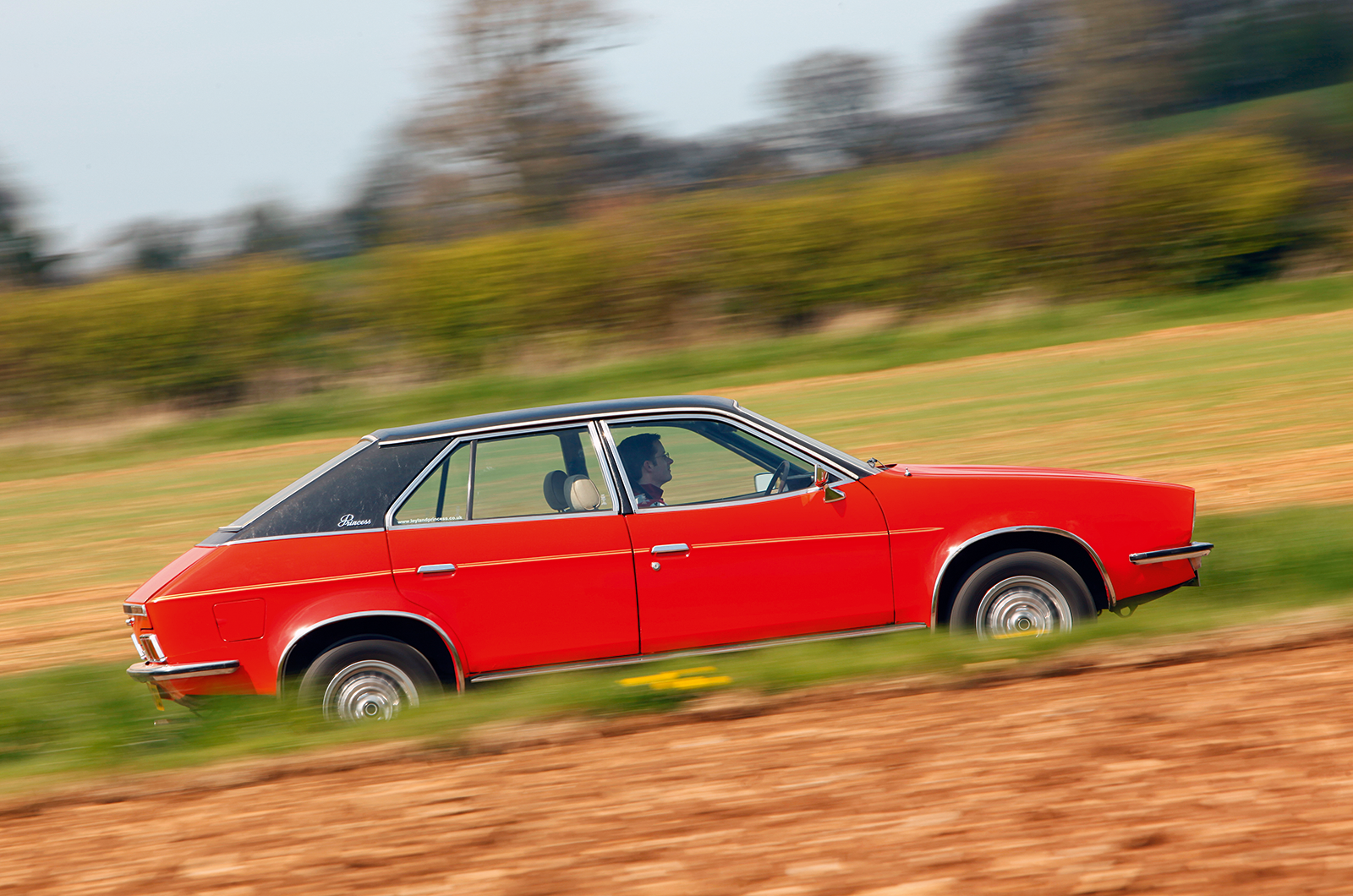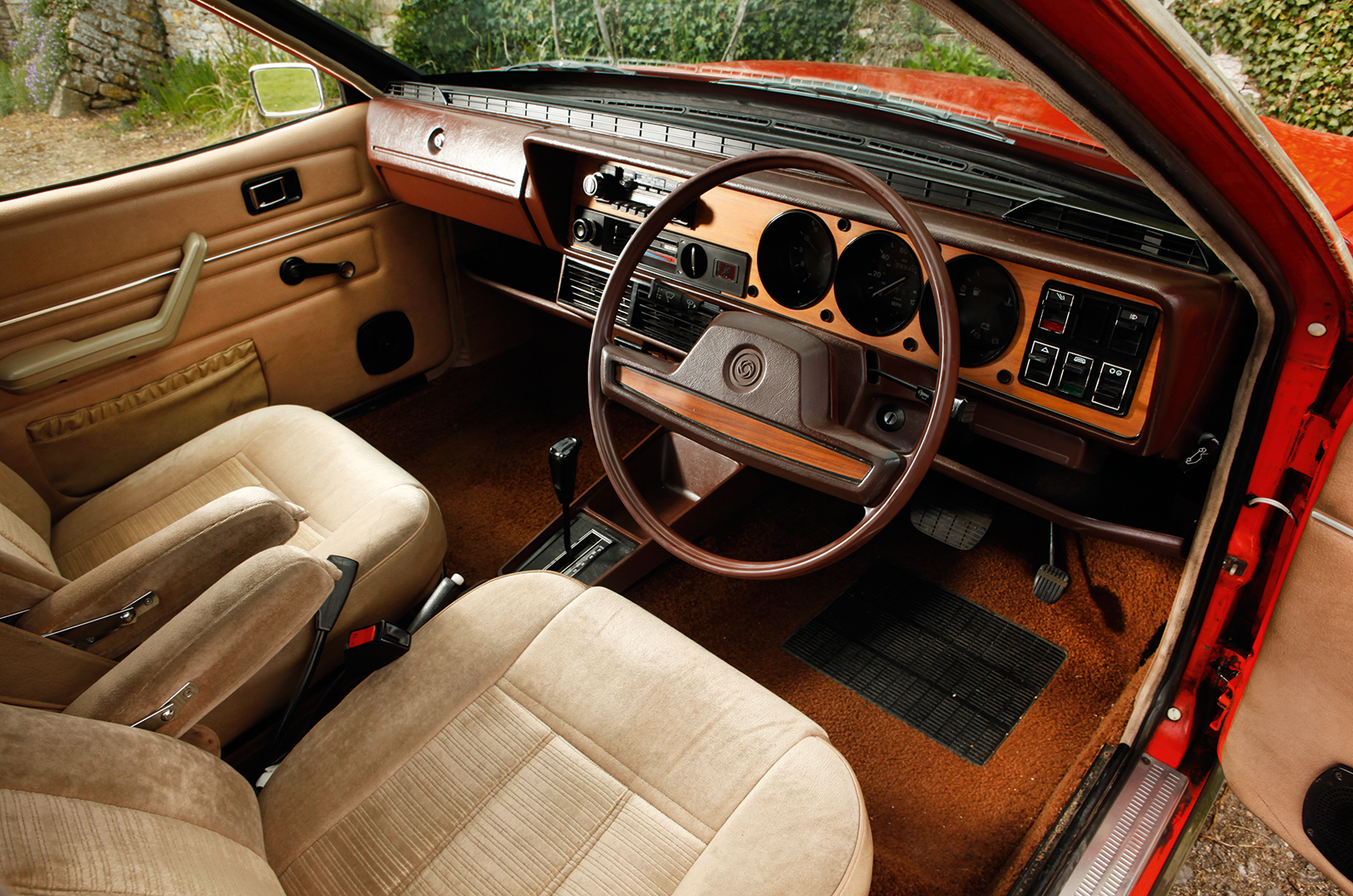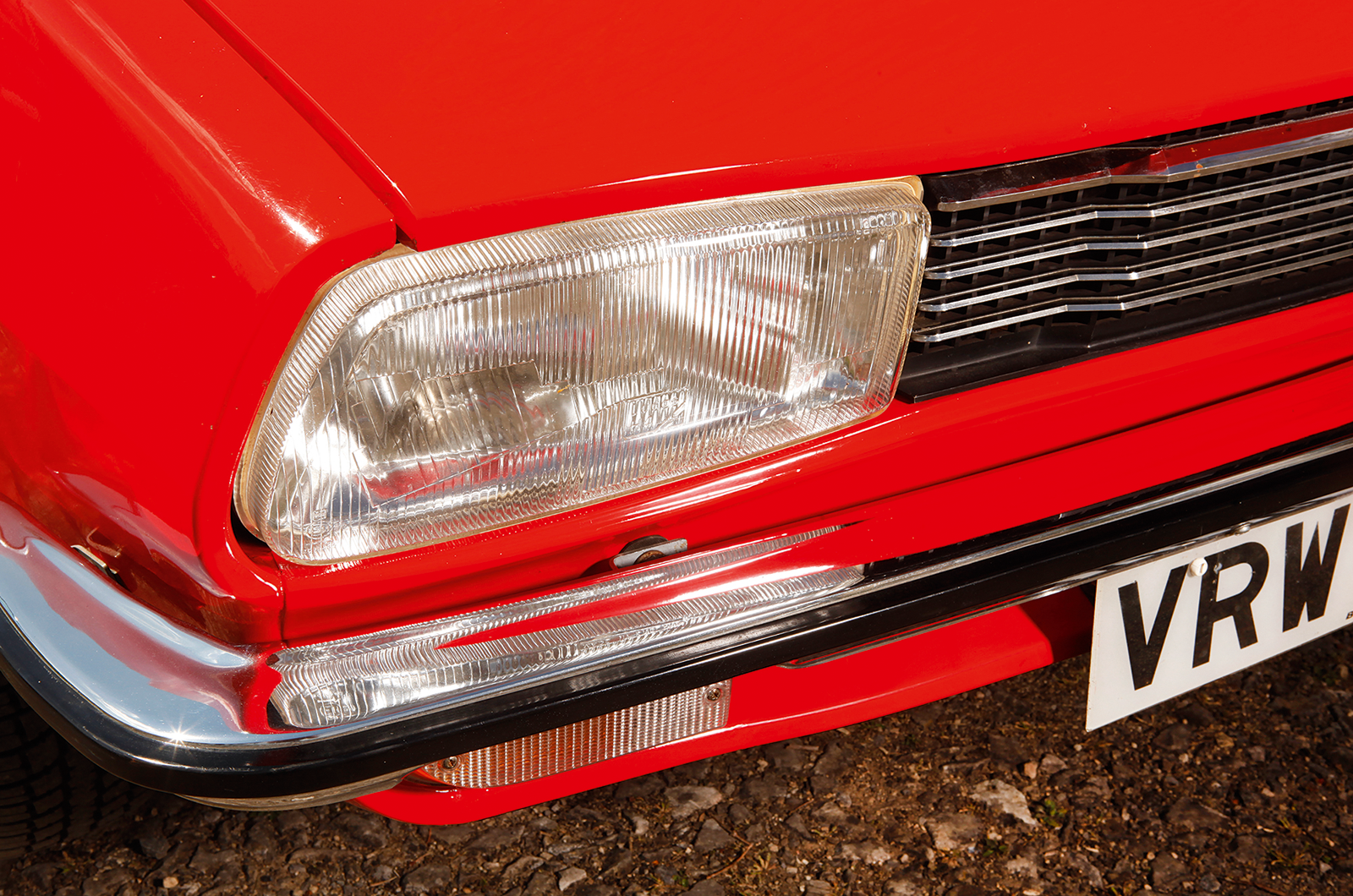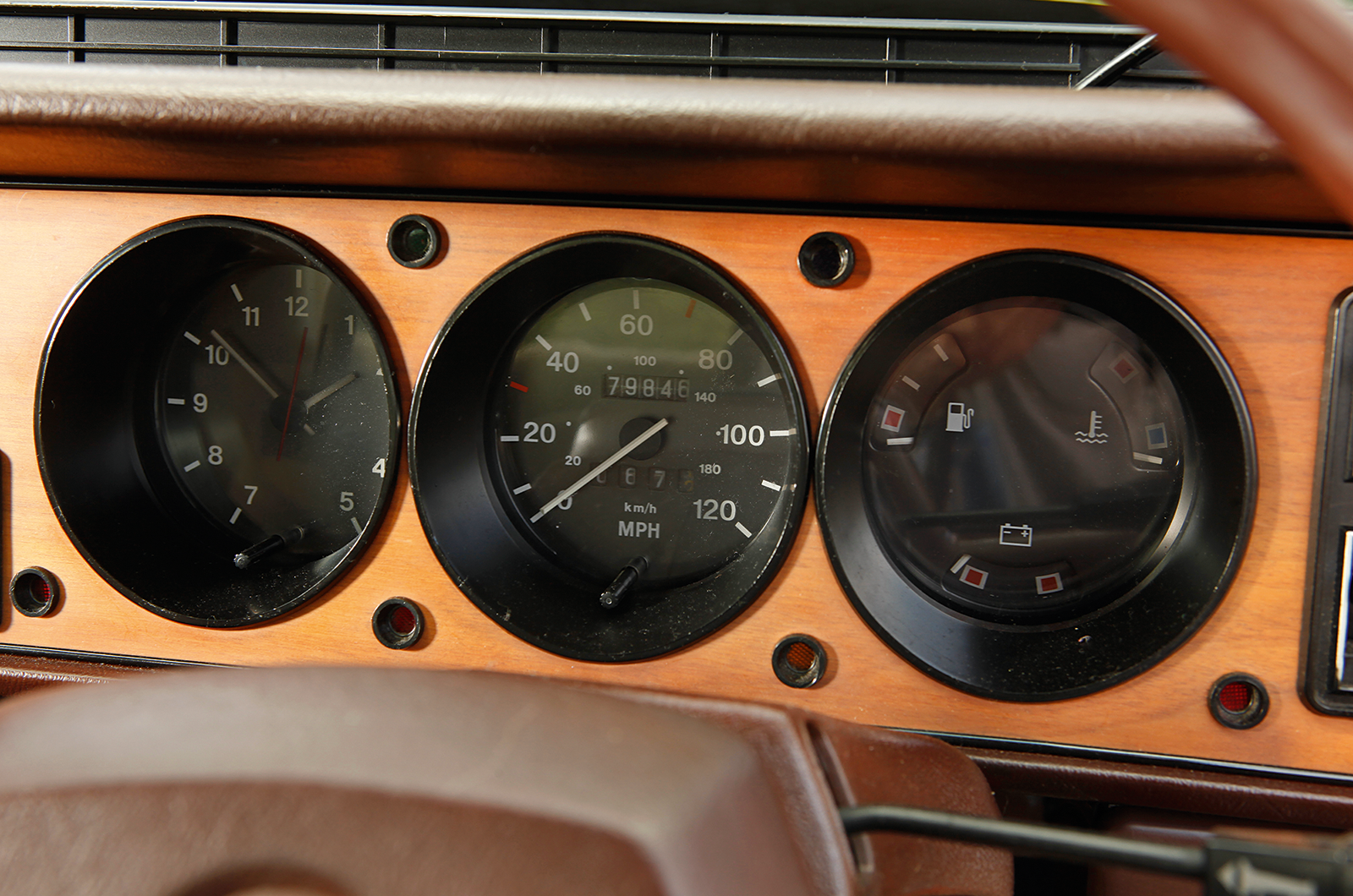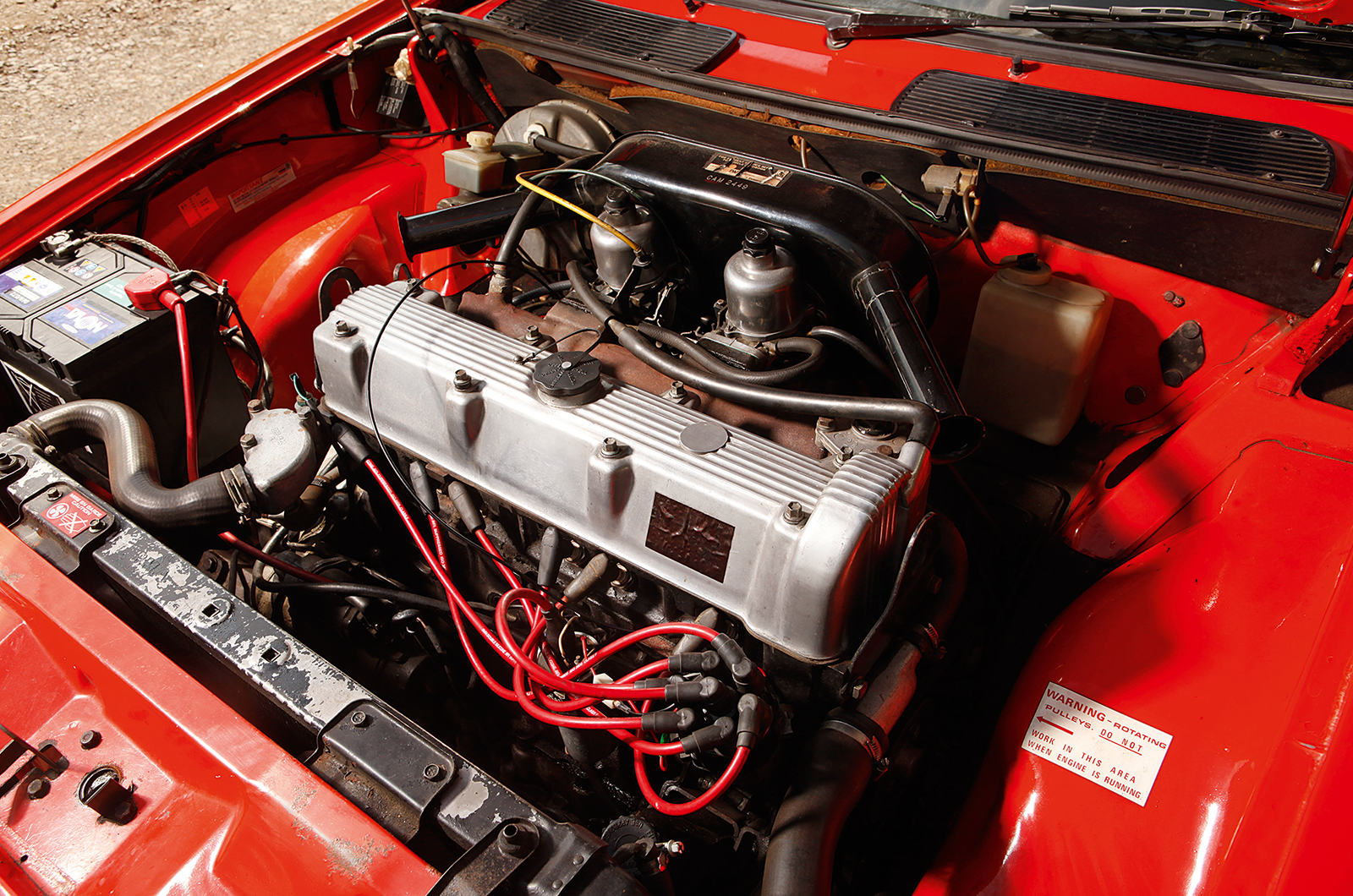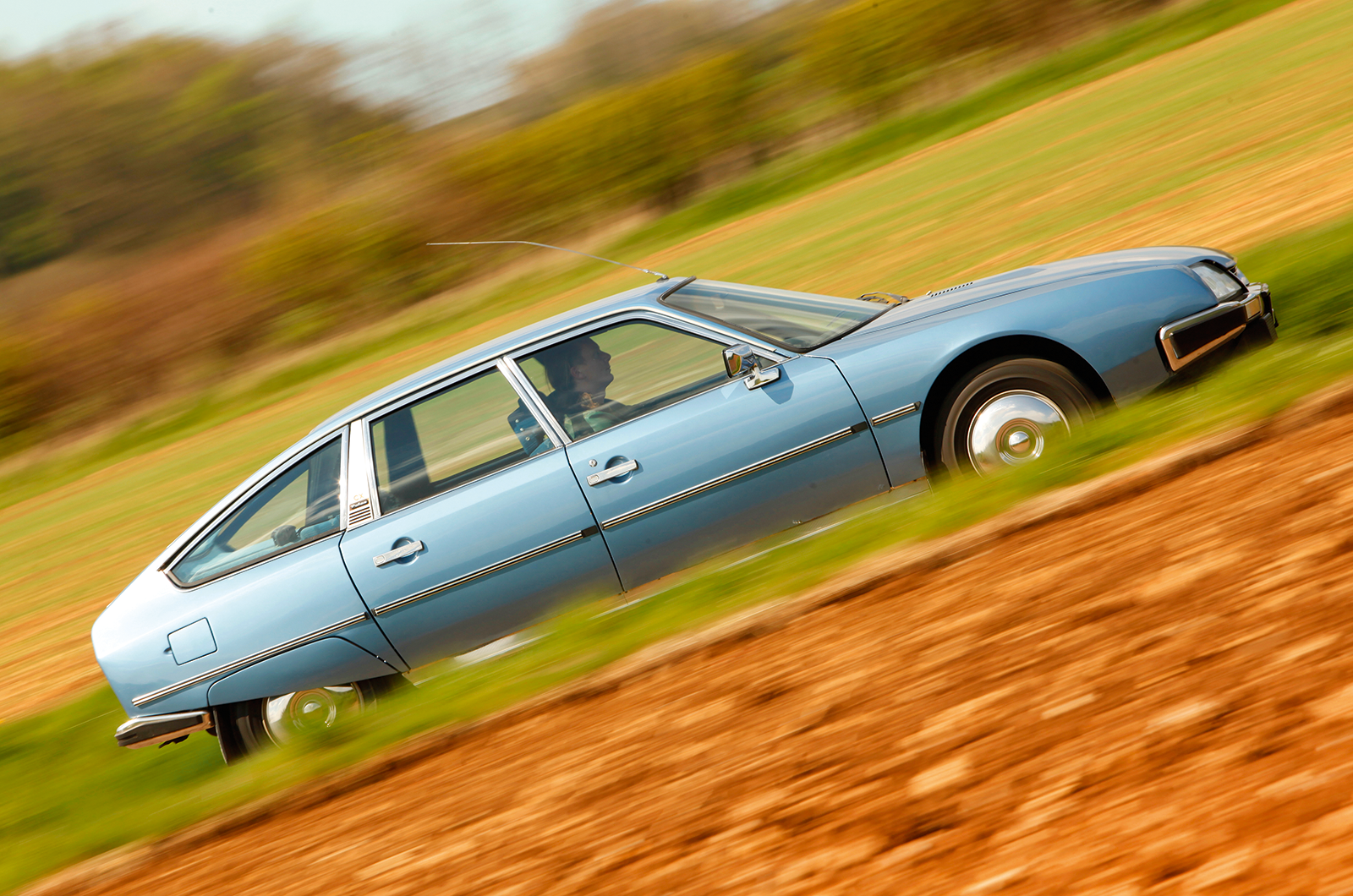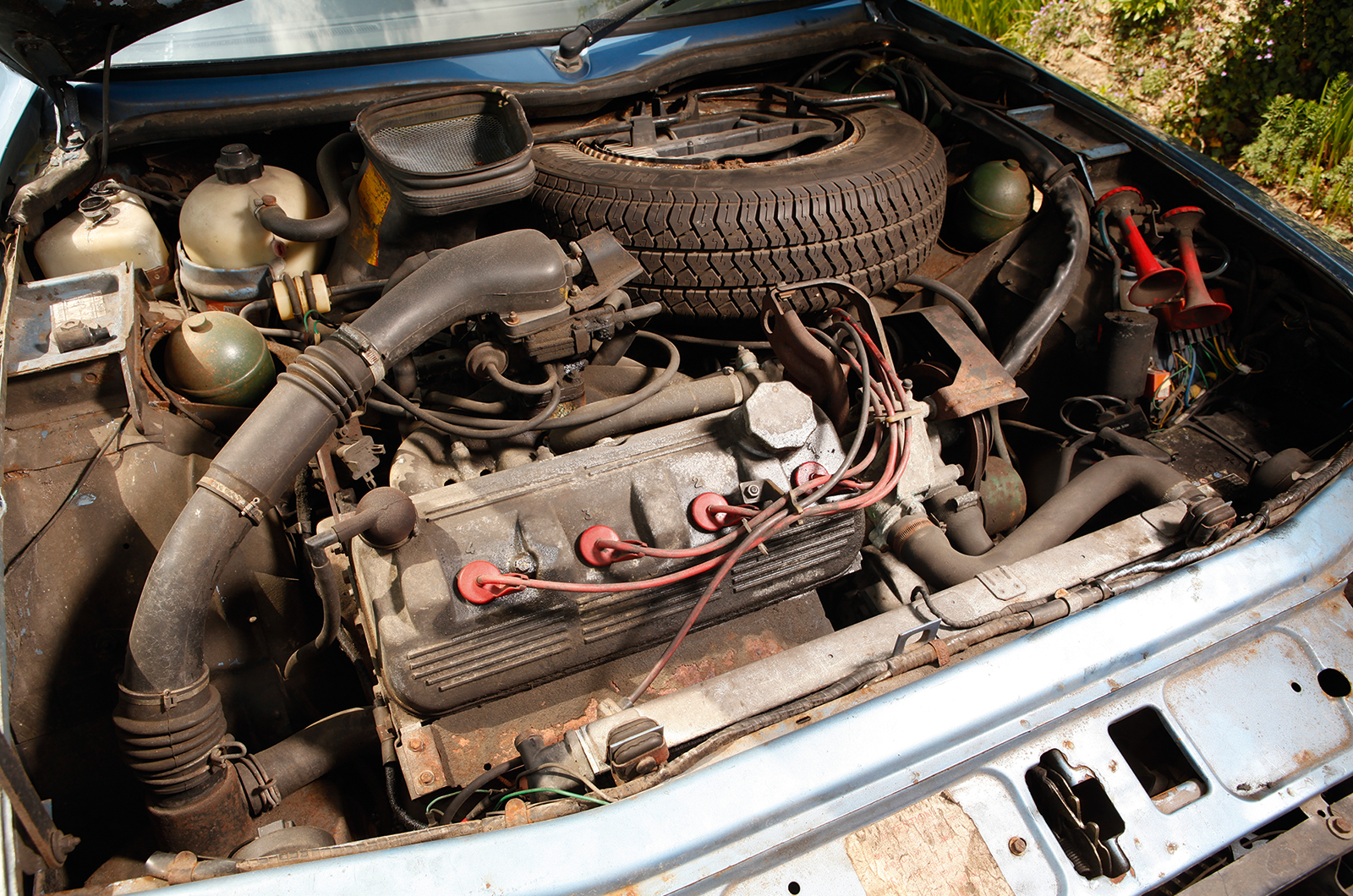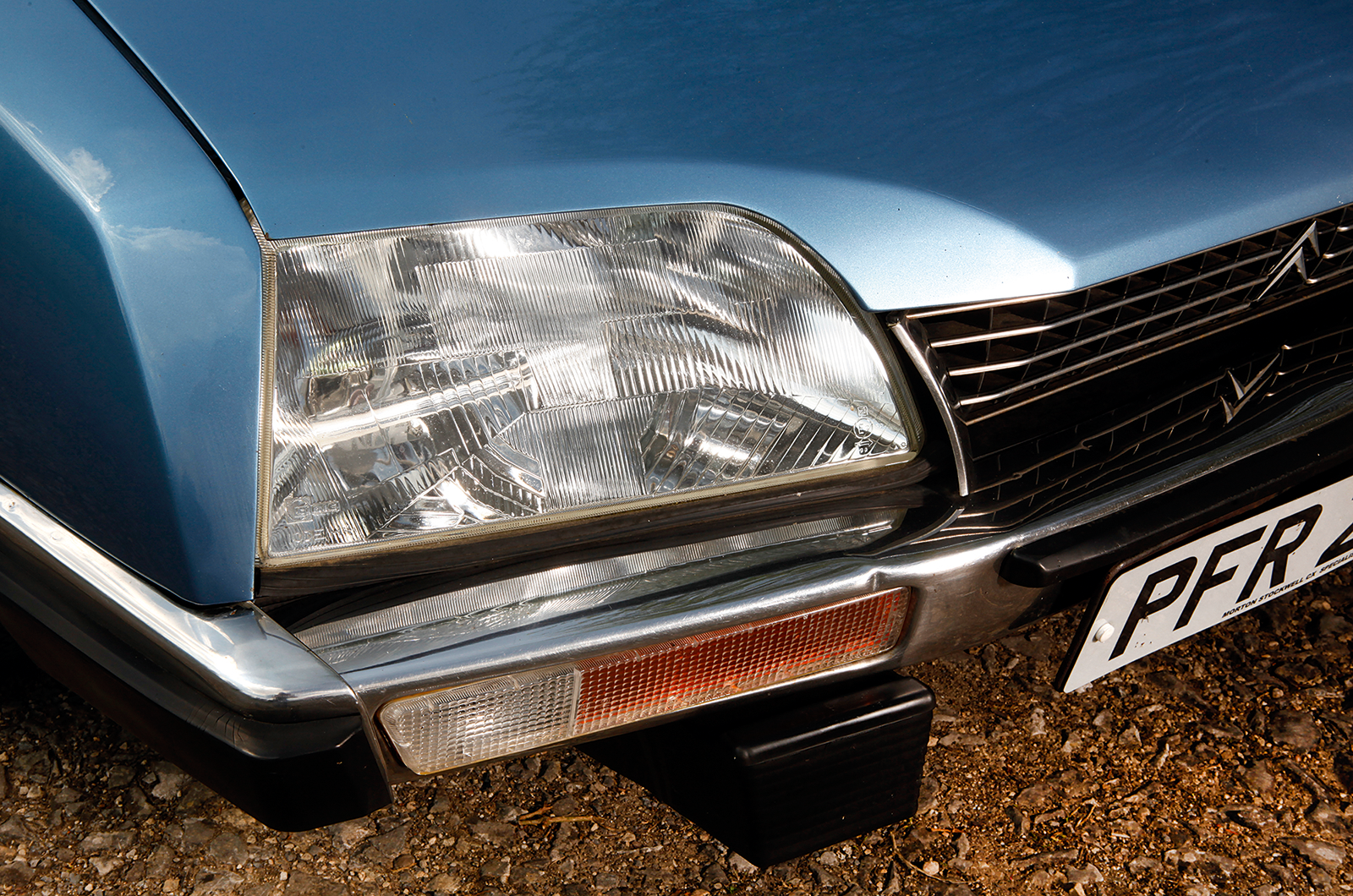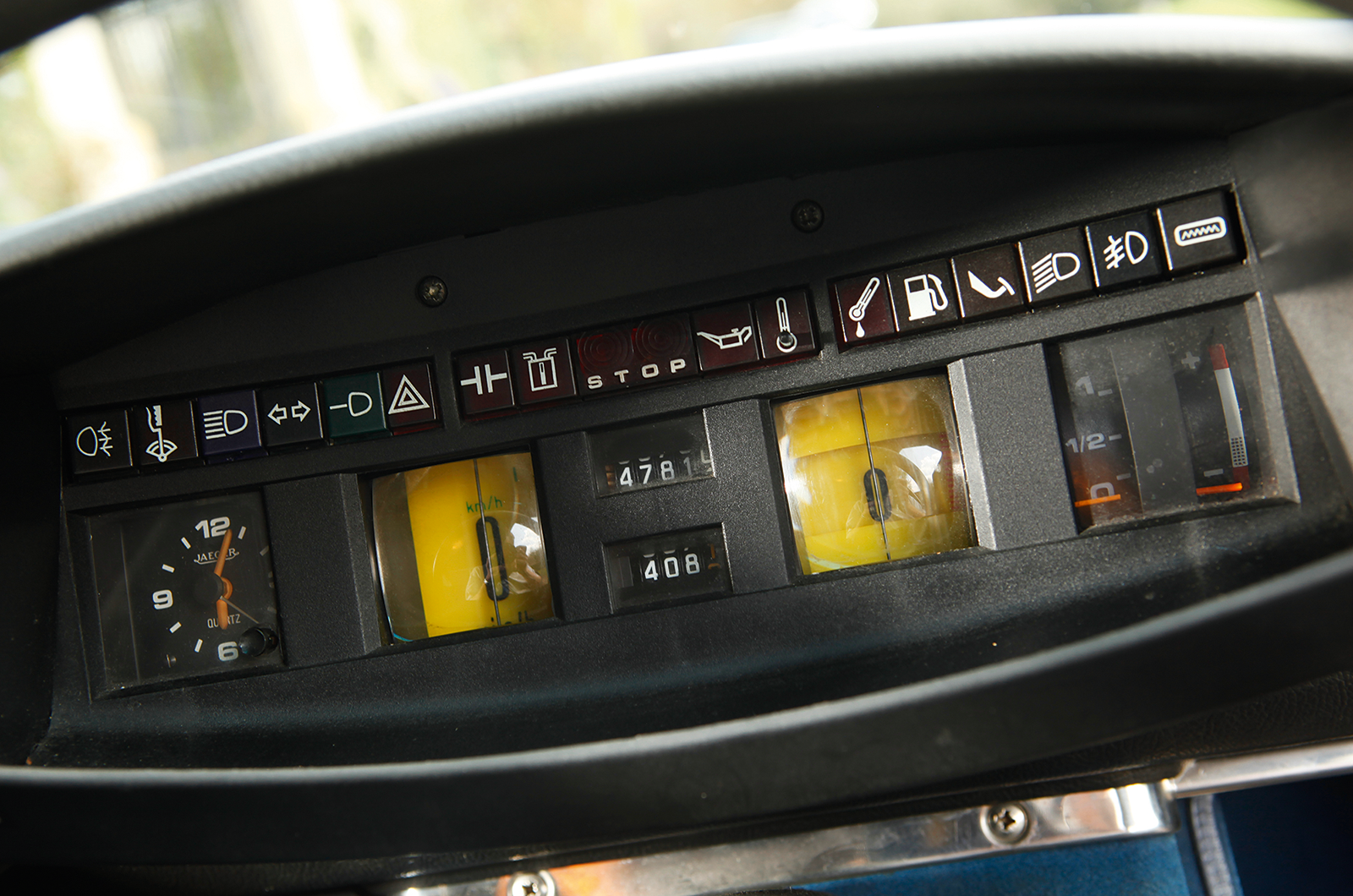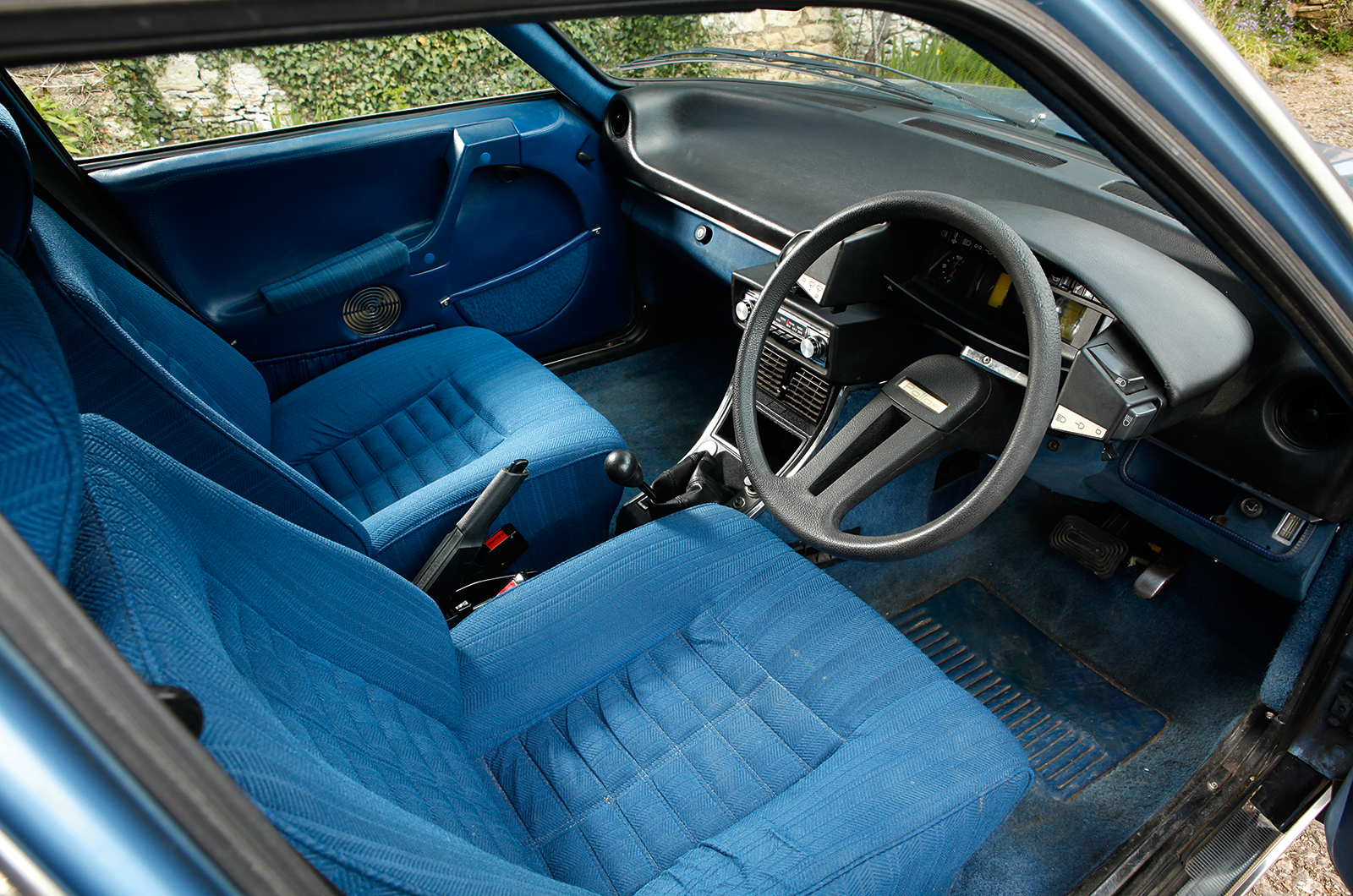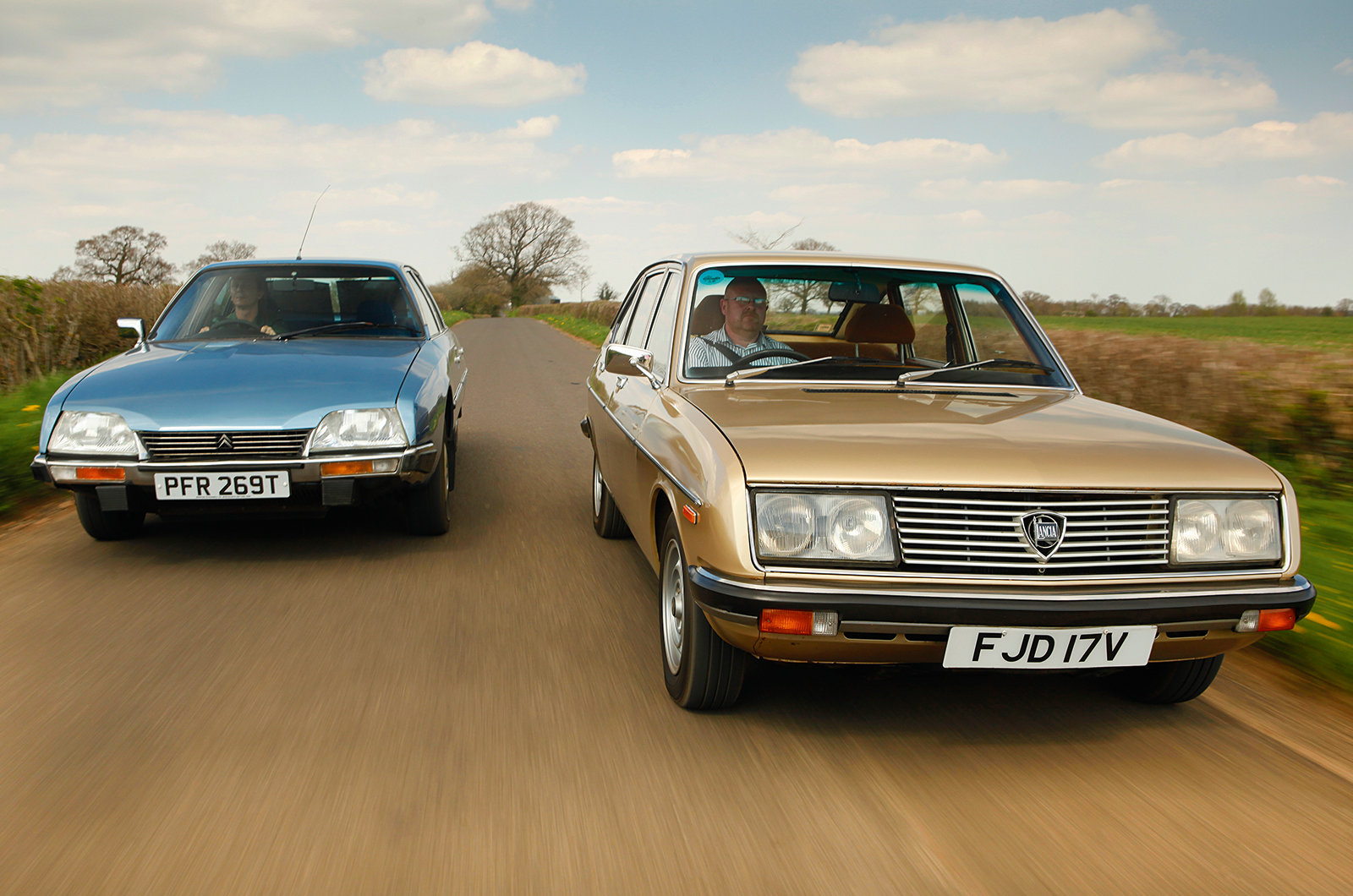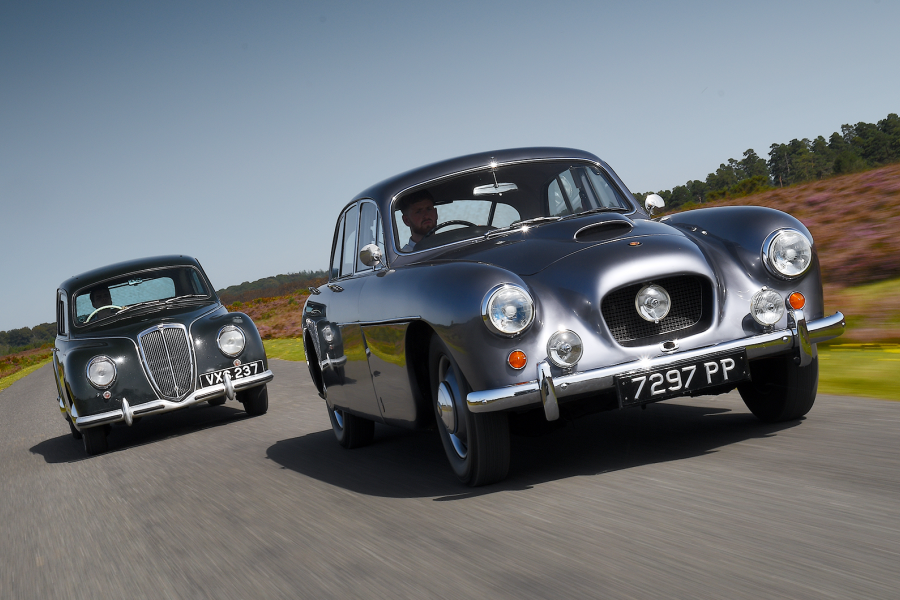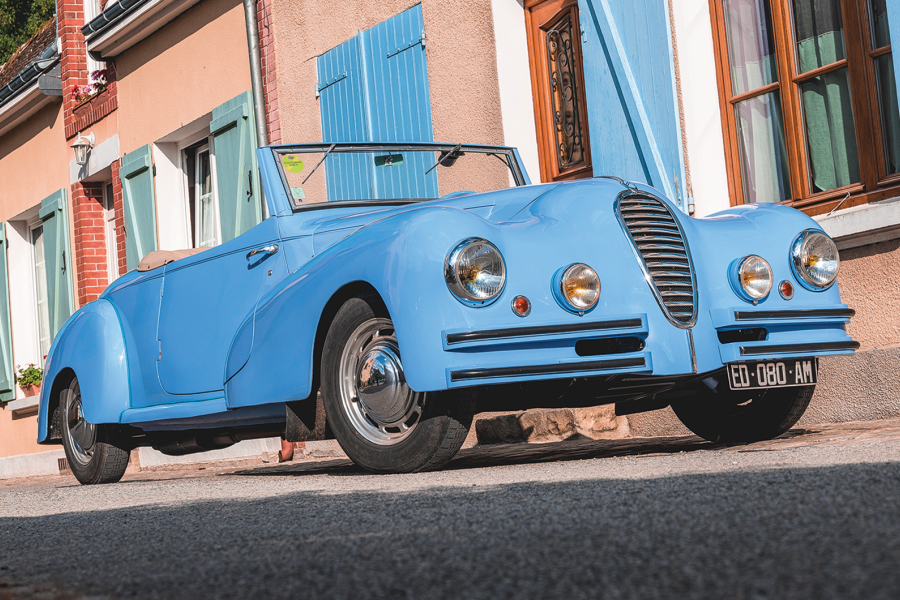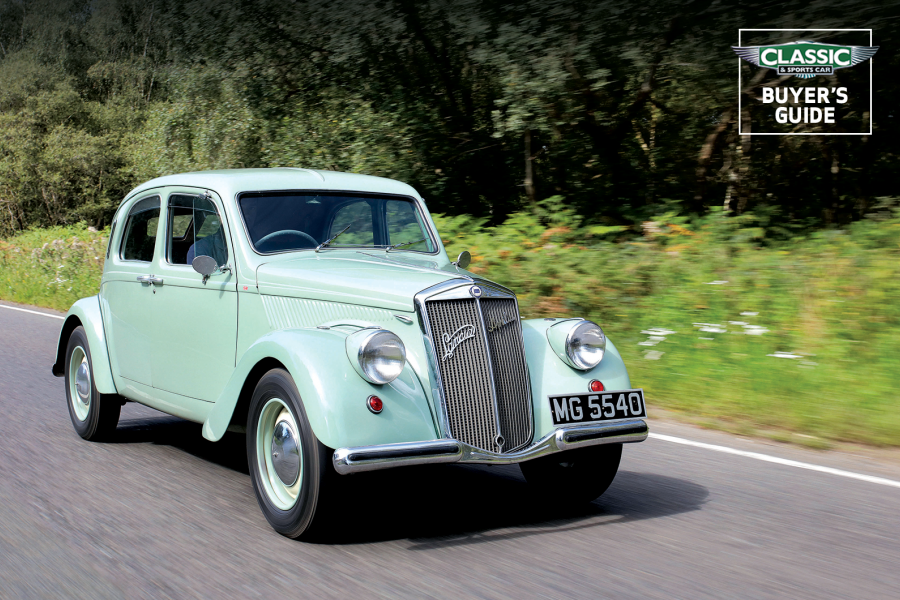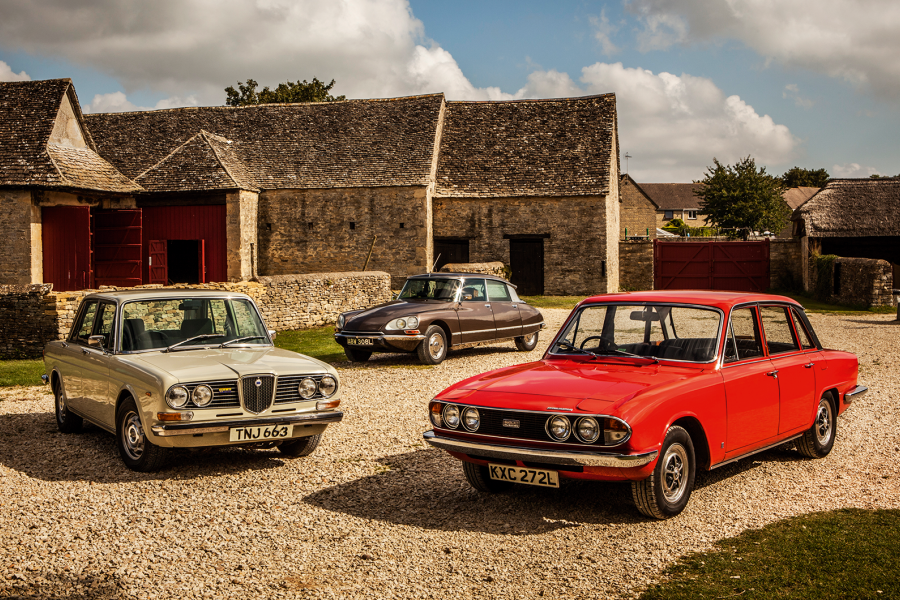Davis’ car is an HLS, which means that it comes with lots of goodies. Bear in mind, however, that this was a time when a heated rear window was considered a luxury item.
There’s a wood-veneer insert to the dash, which is an ergonomic delight to anyone who has experienced the ‘everything just out of reach’ approach that Issigonis insisted on for the Landcrab.
The seats are wonderful, with fold-down armrests, and comfort is the overriding Princess theme. Yet this is no big softy.
The Hydragas suspension is considerably firmer than the Citroën’s hydropneumatic set-up and, while you would be unwise to corner too vigorously, it doesn’t roll as much as its French rival.
The assisted steering is nicely weighted, too, though acceleration is best described as stately. The auto ’box in this car can be persuaded to kick down, but the resultant change in noise doesn’t seem to translate into any noticeable gain in speed.
The smooth transverse ‘six’ of the Princess 2200HLS
And so to the CX, which is still a fabulous-looking car and perhaps the most successful interpretation of the ‘fastback saloon’ style.
Penned by Robert Opron’s team, it continued where the otherworldly DS left off and, in profile, resembles a lower, longer and sleeker Beta – itself like a less-angular Princess.
The Citroën was launched in August 1974 to widespread acclaim, winning Car of The Year by a country mile. It sold well, too, with 112,000 finding new homes in 1976 alone.
It was initially offered with 1985 and 2175cc powerplants derived from those in the DS, and carried over the self-levelling hydropneumatic suspension that was so intrinsic to Citroën’s DNA. The luxurious Pallas joined the range in 1975, and Pawel Anielski’s 2400 boasts the C-matic transmission that arrived the following year.
The pace doesn’t live up to the Citroën CX’s still-sleek style
As if the exterior wasn’t extreme enough, the CX’s cabin offers more evidence of the firm’s unconventional thinking.
The dials are of the revolving-drum type, while pods at either end house controls that would ordinarily be found on stalks – wipers, indicators and the like. Across the top, a row of 17 warning lights stares back at you.
But none of this has been done for the sake of being different. Those auxiliary switches are within a finger’s reach of the steering wheel, and everything is just where you need it. The seats are soft but grip you well and, all in all, the interior of a CX is an incredibly nice place to be.
Out on the road, you need to recalibrate your inputs. The brake pedal has little travel and a lot of assistance. The steering, too, is highly sensitive.
Combined with the soft suspension, it means that you can easily – if unintentionally – pitch the CX into corners at alarming angles
The largest engine lacks urge
The C-matic is another thing to get your head around. In most respects it works like an auto: you leave it in ‘Park’ when you switch off, and there is no clutch pedal.
But you still have to change ratios manually so, when you slow down for a junction, there is a moment at which your brain struggles to come to terms with the fact that you are moving a gearlever and about to stop, yet there is no need to depress a clutch.
The transmission doesn’t seem to do a great deal for performance, however. Anielski’s car has the 2347cc engine that was introduced in 1977, but acceleration is languid.
That suspension is the car’s trump card. Gravel tracks, speed bumps, country lanes, fast A-roads – all are soaked up with supreme nonchalance, to the point where it’s almost difficult to tell when you’re going from one surface to another.
Clockwise from main: single-spoke steering wheel and bright trim inside this Citroën CX; huge headlamps; bonkers dashboard
The Princess and the Citroën are built for comfort rather than speed, with the 2200 offering the slightly more mainstream experience.
It would make a superb long-distance companion and it’s an injustice that the model is dismissed by so many purely because of an inbuilt aversion to BL as a company.
Though surreal at times, the CX is wonderful – and so different to drive that it is almost unfair to compare it to other cars.
Yet it lacks the breadth of ability displayed by the Lancia and Saab. The Beta is the performance choice – the others simply can’t compete – but the Saab’s quality puts its rivals to shame and, while you give away a little in terms of space, you gain a lot more in all-round appeal.
It isn’t an extrovert, merely a beautifully engineered and executed package that speaks for itself.
Images: Tony Baker
Thanks to DS Workshop; www.lanciamotorclub.co.uk; Leyland Princess Enthusiasts’ Club; Saab Enthusiasts’ Club
This was originally in our July 2013 magazine; all information was correct at the date of original publication
Factfiles
The Lancia Beta 2000ES (right) and Citroën CX 2400 on the road
Citroën CX 2400
- Sold/no built 1974-’89/1,041,560 (all CXs)
- Construction steel monocoque
- Engine iron-block, alloy-head, overhead-valve 2347cc ‘four’, Weber carburettor
- Max power 115bhp @ 4800rpm
- Max torque 131lb ft @ 3600rpm
- Transmission three-speed C-Matic, FWD
- Suspension independent, at front by double wishbones rear trailing arms; interconnected hydropneumatic spring/damper units, antiroll bar f/r
- Steering powered rack and pinion
- Brakes powered discs
- Length 15ft 2¼in (4629mm)
- Width 5ft 8in (1727mm)
- Height 4ft 5½in (1358mm)
- Wheelbase 9ft 4in (2844mm)
- Weight 3073lb (1395kg)
- 0-60mph 12.2 secs
- Top speed 111mph
- Mpg 21
- Price new £6797 (1978)
Lancia Beta 2000ES
- Sold/no built 1972-’81/194,916 (all saloons)
- Construction steel monocoque
- Engine iron-block, alloy-head, dohc 1995cc ‘four’, Weber carb
- Max power 119bhp @ 5500rpm
- Max torque 127lb ft @ 2800rpm
- Transmission five-speed manual, FWD
- Suspension independent, at front by MacPherson struts, anti-roll bar rear lower transverse arms, struts, coil springs
- Steering rack and pinion
- Brakes discs, with servo
- Length 14ft 1in (4292mm)
- Width 5ft 7in (1701mm)
- Height 4ft 7in (1397mm)
- Wheelbase 8ft 4in (2540mm)
- Weight 2442lb (1107kg)
- 0-60mph 10.5 secs
- Top speed 107mph
- Mpg 26
- Price new £4197 (1977)
Princess 2200HLS
- Sold/no built 1975-’81/224,942 (all)
- Construction steel monocoque
- Engine all-iron, sohc 2227cc ‘six’, twin SUs
- Max power 110bhp @ 5250rpm
- Max torque 123lb ft @ 3500rpm
- Transmission three-speed auto, FWD
- Suspension independent, at front by wishbones rear trailing arms; interconnected Hydragas displacers f/r
- Steering power-assisted rack and pinion
- Brakes disc/drum, with servo
- Length 14ft 7½in (4457mm)
- Width 5ft 8in (1727mm)
- Height 4ft 7½in (1409mm)
- Wheelbase 8ft 9in (2667mm)
- Weight 2678lb (1215kg)
- 0-60mph 14 secs
- Top speed 105mph
- Mpg 23
- Price new £4390 (1978)
Saab 99
- Sold/number built 1968-’84/588,643 (all)
- Construction steel monocoque
- Engine iron block, alloy-head, sohc 1709cc ‘four’, Zenith Stromberg carb
- Max power 87bhp @ 5500rpm
- Max torque 98lb ft @ 3000rpm
- Transmission four-speed manual with freewheel, FWD
- Suspension: front independent, by wishbones rear rigid axle, longitudinal links; coil springs, telescopic dampers f/r
- Steering rack and pinion
- Brakes discs, with servo
- Length 14ft 3½in (4354mm)
- Width 5ft 6in (1676mm)
- Height 4ft 9in (1440mm)
- Wheelbase 8ft 1½in (2473mm)
- Weight 2349lb (1065kg)
- 0-60mph 15 secs
- Top speed 97mph
- Mpg 26
- Price new £4548 (1977)
READ MORE
Separated at birth: Saab 99 vs Triumph Dolomite
Citroën GS Pallas vs Vanden Plas 1.7: avant-garde for the masses
Soul sisters: Fiat X1/9 vs Lancia Beta Monte-Carlo
James Page
James Page is a regular contributor to – and former Editor of – Classic & Sports Car
